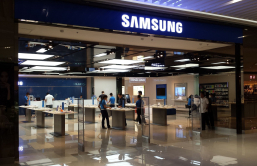
(Photo : Tata Motors)
Tata Motors
Tata Motors' Profit Plummets Amid JLR, Commercial Sales Dip
Supply Constraints Hit Tata Motors, Q2 Profit Down 11%
Tata Motors' Earnings Stumble: JLR, Commercial Sales Slump
- Tata Motors reports an 11% drop in net profit due to slowing growth in Jaguar Land Rover (JLR) and commercial vehicle sales.
- Despite challenges, the company reported a profit before tax of Rs 14,600 crore for H1 FY25, marking an improvement over the previous year.
- P.B. Balaji, Tata Motors' Group CFO, remains confident of steady improvement in performance and delivering a strong H2.
- The company anticipates demand to pick up gradually in Q3, led by the ILMCV and Buses segments, followed by the M&HCV and SCVPU segments.
Tata Motors, a leading automobile giant, has reported a significant drop in its net profit by more than 11% to Rs 3,343 crore in the July-September period. This decline is attributed to the slowing revenue growth in its luxury unit, Jaguar Land Rover (JLR), and its commercial vehicles business. The company's consolidated revenue also fell by 3.5% to Rs 1.01 lakh crore, reflecting a challenging external environment.
The revenue of JLR, a key contributor to Tata Motors' earnings, was down by 5.6% to 6.5 billion pounds (about Rs 71,000 crore) in the quarter. The company highlighted that JLR's performance was impacted by temporary supply constraints, which resulted in EBIT margins of 5.1%, down 220 basis points.
The commercial vehicle sales, another significant segment of Tata Motors, dropped 13.9% at Rs 17,288 crore. The passenger vehicle revenue also saw a decline of 3.9% at Rs 11,700 crore in Q2. Despite these challenges, the automaker reported a profit before tax (PBT) of Rs 14,600 crore for H1 FY25 (April-September), marking an improvement of Rs 2,900 crore over the previous year.
Company's Outlook Amid Challenges
P.B. Balaji, Tata Motors' Group Chief Financial Officer, acknowledged the impact of significant external challenges on the quarter's growth. However, he emphasized that the business fundamentals remain strong. The company is focused on driving growth, competitiveness, and free cash flows. As the supply challenges ease and demand picks up, the company is confident of steady improvement in its performance and delivering a strong H2.
The automaker remains cautious on near-term domestic demand. However, it expects the festive season and substantial investments in infrastructure to bolster it. JLR wholesales are expected to improve sharply as supply challenges ease. The company expects an all-round improvement in performance in H2 FY25 and aims to become net debt-free by this year.
Adrian Mardell, JLR Chief Executive Officer, stated that JLR has delivered a resilient performance in Q2, resulting in a 25% increase in first-half profits year-on-year. This statement reflects the company's ability to navigate through challenging times and still deliver a robust performance.
Historical Challenges and Future Expectations
In the past, Tata Motors has faced similar challenges. The company has a history of overcoming obstacles through strategic planning and execution. The current situation is no different. The company is leveraging its strong business fundamentals and strategic focus to navigate through the current challenges.
The company's total expenses stood at Rs 97,330 crore against Rs 1,00,649 crore in the same quarter a year ago. This reduction in expenses is a positive sign, indicating the company's efforts to control costs amidst challenging times.
As the company moves forward, it anticipates demand to pick up gradually in Q3, led by the ILMCV and Buses segments, followed by the M&HCV and SCVPU segments. In Q2 FY25, the PV (ICE) business delivered consistent EBITDA margins of 8.5%, while the EV business reported an EBITDA margin of -5%. However, excluding product development expenses, the EV business saw positive EBITDA margins of 1.7%.
The company expects industry wholesale volumes to be lower in the near term to facilitate channel inventory reduction ahead of the new calendar year. This strategy is aimed at maintaining a healthy balance between supply and demand, thereby ensuring business sustainability.









